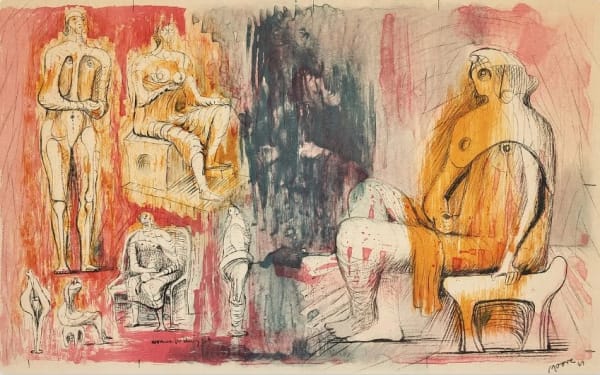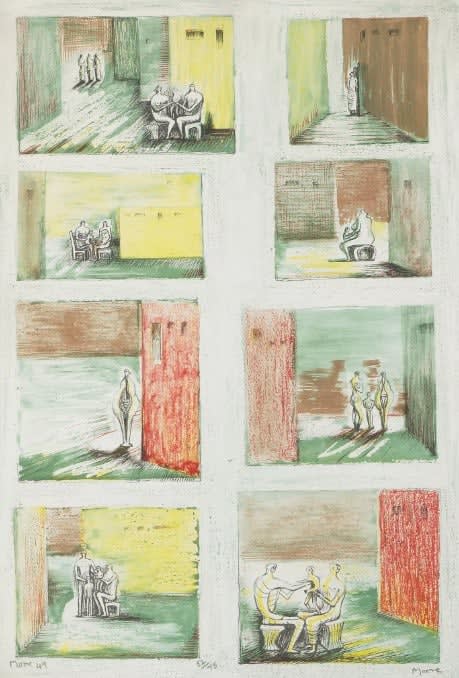Henry Moore
“Abstraction means getting away from a visual interpretation but nearer to an emotional one.”
Moore was born in Castleford in Yorkshire, the seventh of eight siblings, in 1898. He exhibited an early fascination with sculpture, and his teachers encouraged his artistic talents. His parents were not supportive of his ambitions to become a sculptor, and he initially began work as a teacher at the school he had attended, before volnteering for service in the First World War. Upon his return, he resumed his education by enrolling at the Leeds School of Art, which set up a sculpture studio especially for him. One of his fellow students was Barbara Hepworth. Moving to London, he taught for six years at the Royal College of Art, then took on the role of Head of the Department of Sculpture at the Chelsea School of Art. At the outbreak of the Second World War, he resigned his teaching posts and worked full-time as an artist, producing some of the defining images of the War Artists' Advisory Committee programme, and coming to public prominence for the first time.
Following the War, Moore's public profile continued to rise. In 1946, he was the first British artist to receive a solo exhibition at the Museum of Modern Art in New York. In 1948, he won the International Sculpture prize at the Venice Biennale. A string of major public commissions followed, including works for the Festival of Britain (1951), UNESCO (1958) and the University of Chicago (1963) among many others.
Moore's forms are usually abstractions of the human figure, typically depicting mother-and-child or reclining figures. Moore's works are usually suggestive of the female body, apart from a phase in the 1950s when he sculpted family groups. His forms are generally pierced or contain hollow spaces. Many interpreters liken the undulating form of his reclining figures to the landscape and hills of his Yorkshire birthplace.
In addition to his work as a sculptor, Moore was also a devoted printmaker, created hundreds of etchings and lithographs.





